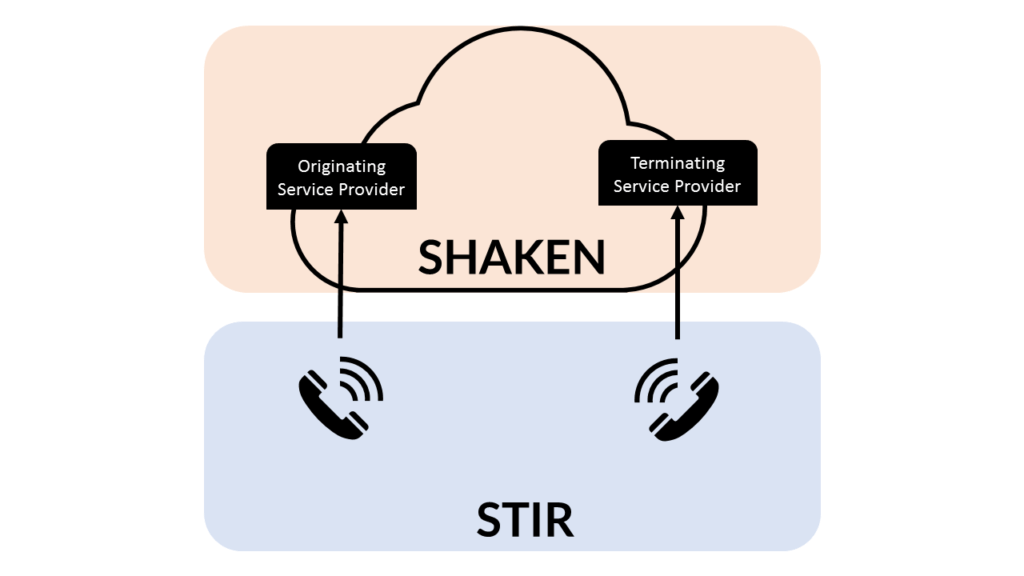If you are a business that makes outbound calls to customers in the US, you may have heard of STIR/SHAKEN, a framework that verifies the identity of callers and prevents spoofing. STIR/SHAKEN stands for Secure Telephone Identity Revisited (STIR) and Signature-based Handling of Asserted Information Using Tokens (SHAKEN). It is a mandate by the Federal Communications Commission (FCC) that requires voice service providers to implement call authentication technology on Voice over Internet Protocol (VoIP) calls and business communications in North America.
STIR/SHAKEN works by assigning an attestation level to each call, which indicates the degree of confidence that the caller ID is accurate and authentic. There are three levels of attestation: A, B, and C. A full attestation (A) means that the source of the call and the right to use the caller ID are verified. A partial attestation (B) means that the source of the call is verified, but not the right to use the caller ID. A gateway attestation © means that neither the source of the call nor the right to use the caller ID are verified.
The attestation level of your calls can affect how they are displayed and treated by the carriers and call blocking apps. A higher attestation level means that your calls are delivered with a clear and branded caller ID that matches your business name and identity. A lower attestation level means that your calls are labeled as spam, scam, fraud, or unknown, which can lower your answer rates and conversions.
Therefore, it is important to know and test your attestation level before you make outbound calls to your customers and prospects. In this article, we will cover five subheadings that will help you understand and use a STIR/SHAKEN attestation tester.
What is a STIR/SHAKEN Attestation Tester and Why Do You Need It?
A STIR/SHAKEN attestation tester is a tool that allows you to check your attestation level for any phone number that you use for outbound calling. It also provides you with insights into other aspects of your call data reputation, such as CNAM certification, Verstat validation, and call delivery auditing.
A STIR/SHAKEN attestation tester can help you:
- Verify that your calls are signed and certified by both the originating and terminating carriers
- Ensure that your calls are receiving the appropriate attestation level (A or B)
- Prevent your calls from being flagged or blocked by the carriers or call-blocking apps
- Protect your caller IDs from bad actors attempting to hijack your numbers with nefarious intent
- Optimize your calls for the customer journey and provide a positive and branded caller ID
By using a STIR/SHAKEN attestation tester, you can improve your call performance and customer experience by ensuring that your calls are delivered with trust and transparency.
How to Use a STIR/SHAKEN Attestation Tester
One of the best ways to use a STIR/SHAKEN attestation tester is to use a service like Call Confident, which provides you with a comprehensive and easy-to-use STIR/SHAKEN attestation testing tool. Call Confident is a platform that monitors and manages your caller ID reputation across all major carriers and call-blocking apps. It also offers a STIR/SHAKEN attestation testing tool as part of its service.
To use Call Confident’s STIR/SHAKEN attestation testing tool, you need to follow these simple steps:
- Register your numbers on Call Confident
- Import the numbers you want to test with Call Tester
- Receive a report
The report will show you your attestation level for each number, as well as other information such as CNAM certification, Verstat validation, and call delivery auditing. You can also access detailed dashboards that give you all the data you need in one place to take action and increase your call completion rates.
How to Interpret Your Attestation Level Results
Once you have used a STIR/SHAKEN attestation tester to check your attestation level for each number, you need to interpret your results and understand what they mean for your call performance and customer experience.
Here are some guidelines to help you interpret your attestation level results:
- A full attestation (A) means that your calls are verified and trusted by the carriers and call-blocking apps. Your calls are likely to be delivered with a clear and branded caller ID that matches your business name and identity. This is the ideal attestation level for outbound calling, as it can increase your answer rates and conversions.
- A partial attestation (B) means that your calls are partially verified by the carriers and call-blocking apps. Your calls may or may not be delivered with a clear and branded caller ID, depending on the carrier or call-blocking app. This is a moderate attestation level for outbound calling, as it can have mixed effects on your answer rates and conversions.
- A gateway attestation © means that your calls are not verified by the carriers and call-blocking apps. Your calls are likely to be labeled as spam, scam, fraud, or unknown, which can lower your answer rates and conversions. This is the worst attestation level for outbound calling, as it can damage your call performance and customer experience.
How to Improve Your Attestation Level
If you find out that your attestation level is not optimal for outbound calling, you need to take steps to improve it and ensure that your calls are delivered with trust and transparency.
Some of the steps you can take to improve your attestation level are:
- Contact your voice service provider and request a higher attestation level for your numbers
- Provide evidence and documentation that proves your legitimacy and compliance as a business
- Explain the purpose and value of your calls and how they benefit your customers and prospects
- Use clean and verified phone numbers that match your brand name and identity
- Avoid using spoofed or masked phone numbers that may trigger suspicion or distrust
- Follow the rules and regulations of the industry and the country you are calling into
How to Maintain Your Attestation Level
The final step to using a STIR/SHAKEN attestation tester is to maintain your attestation level by keeping your phone numbers in good standing and fostering trust with the carriers and call-blocking apps.
Some of the ways to maintain your attestation level are:
- Use a service like Call Confident to monitor your attestation level regularly and address any issues or flags as soon as possible
- Optimize your calls for the customer journey and provide a positive and branded caller ID
- Comply with the standards and protocols of the industry and the country you are calling into, such as STIR/SHAKEN
- Build long-term relationships with your customers and prospects by providing value and satisfaction with every call
STIR/SHAKEN is a framework that verifies the identity of callers and prevents spoofing. It assigns an attestation level to each call, which indicates the degree of confidence that the caller ID is accurate and authentic. A higher attestation level means that your calls are more likely to be delivered with a clear and branded caller ID that matches your business name and identity. A lower attestation level means that your calls are more likely to be labeled as spam, scam, fraud, or unknown, which can lower your answer rates and conversions.
Therefore, it is important to know and test your attestation level before you make outbound calls to your customers and prospects. By using a STIR/SHAKEN attestation tester, you can check your attestation level for any phone number that you use for outbound calling. You can also improve, remediate, and maintain your attestation level by following the steps and best practices outlined in this article.



